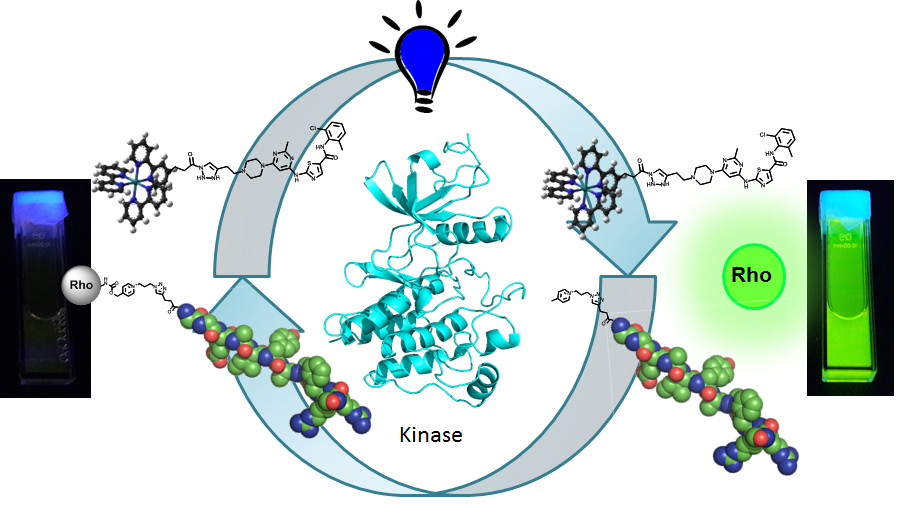Kinase Templated Abiotic Reaction
Protein kinases are essential regulators of cellular signalling and have been at the centre stage of drug discovery for the past decade. The successful development of kinase inhibitors demonstrated that kinases were drugable and triggered tremendous research effort in this area. However, inhibitors developed so far often target the conserved ATP binding site of the protein and thus are lacking selectivity1, and the more selective ones are targeting an inactive form of the protein. These features limit their use as chemical probes to sense kinase activity. Herein we report a strategy based on two reacting probes2 targeting both nucleotide and substrate binding sites3. The reaction used4 allows to use fluorescence readout to selectively sense Abl of Src kinase activity both in biochemical and fixed whole cell experiments.

Fig1. Cartoon of fluorophore release through the reaction templated by Abl kinase (PDB: 2GQG)
[1] O. Hantschel, U. Rix, T. Buerckstuemmer, U. Schmidt, M. Kneidinger, K. L. Bennett, I. Kaupe, W. Ellmeier, P. Valent, G. Superti-Furga, Blood 2007, 110, 207b-207b.
[2] K. Gorska, I. Keklikoglou, U. Tschulena, N. Winssinger, Chem Sci 2011, 2, 1969-1975.
[3] K. K. Sadhu, T. Eierhoff, W. Römer, N. Winssinger, J Am Chem Soc 2012, 134, 20013-20016.
[4] D. Chang, E. Lindberg, N. Winssinger, J Am Chem Soc 2017, 139, 1444-1447.